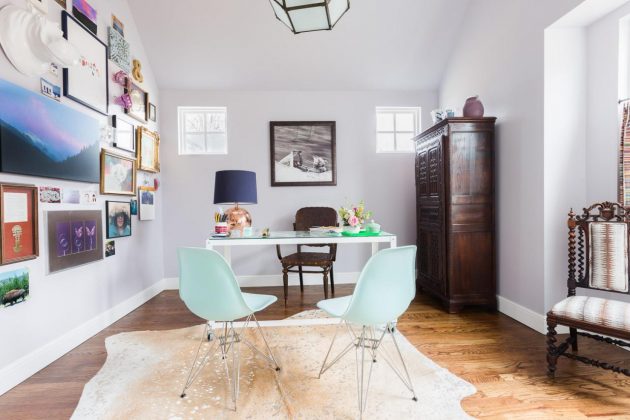Your home office plays a major role in your comfort, productivity, and even your reputation, so choosing a room in which to build your home office is not a decision to take lightly. You’ll have plenty of time to make gradual adjustments to your office, like upgrading the furniture or painting the walls, but everything starts from the room in your house you choose to serve as your base of operations.
Which factors should you consider when selecting a home office room? And how should you make your final decision?

Factors to Consider
These are some of the most important factors to consider when evaluating the different rooms of your home:
- Spaciousness. First, consider the amount of space you have to work with. For most professionals, a bigger office is better, since it provides for more flexibility—but you also don’t want to sacrifice the size of your living room or master bedroom to do it. If you’re not sure how much office space you need, start looking at office furniture from a vendor you trust. Look at the desk and chair options that most appeal to you, measure them, and imagine how they might fit into your desired space.
- Positioning. One of the most important priorities to consider is positioning. If there are multiple rooms to choose from, think about the relative positioning of each room in your consideration. For example, would you prefer your office to be directly next to the kids’ playroom, which might be noisy, or next to the spare bedroom, which will usually be empty? Do you want your home office to be in the front or the back of the house? Do you want to have your office on the first floor or second floor? Some of these questions also play into accessibility, our next point…
- Accessibility. It’s also a good idea to think about how easy it is to get entry to your office. If you plan on having clients or other guests regularly, you’ll want to make sure your office is easy to reach—like putting it on the first floor, next to the front door. Otherwise, you might optimize for privacy, keeping your office away from the main routes within your home.
- Soundproofing. Your home office should be free from outside distractions, meaning a soundproofed or sound-resistant office would be ideal. Consider the acoustics of each room, and how they might affect your work. For example, enclosed rooms with no windows, like those in a finished basement, tend to be quieter than their counterparts. Additionally, you may wish to avoid rooms that are exposed to excessive noise, like if there’s a window facing a busy highway. You can always improve the soundproofing in a room later, but it’s helpful to get a strong start.
- Window access. Looking out the window during a busy day can help you destress and relax your eyes, but it can also be a distraction. Consider whether you want your home office to have an available window.
- Alternative functionality. Hopefully, you won’t be using your office for much longer than 40 hours per week. What function is the room going to serve in the meantime? You’ll want to think about the alternative functionality this room can have, like doubling as a home gym or as additional storage.
What to Do Next
What do you do after choosing a room to serve as your home office? That depends on your goals, your current assets, and how soon you need this room to be operational. For example, you might:
- Shop for and purchase furniture. Many people choose to build their home office around the most ergonomically designed, comfortable furniture they can find. Accordingly, you might start shopping for (and purchasing) furniture as your first move.
- Make adjustments to the room. You may also want to make adjustments to the room before you start building it out with furniture. For example, you might replace the flooring, install a new window, or paint the walls.
- Invest in décor. The subjective design of your home office is something to seriously consider in addition to the placement of the room. You can make your office more productive and more inviting with things like bookshelves, houseplants, and art.
- Set up a temporary workspace. If you need to start working from home immediately and you don’t have anything you need, you’ll have to set up a temporary workspace with whatever furniture you have on hand.
Over time, as you become better acquainted with your new work-from-home environment, you’ll be able to make smarter adjustments that support your comfort and productivity. Start with a strong foundation, and make iterative improvements as you get the chance. In time, you’ll build the workspace of your dreams.














